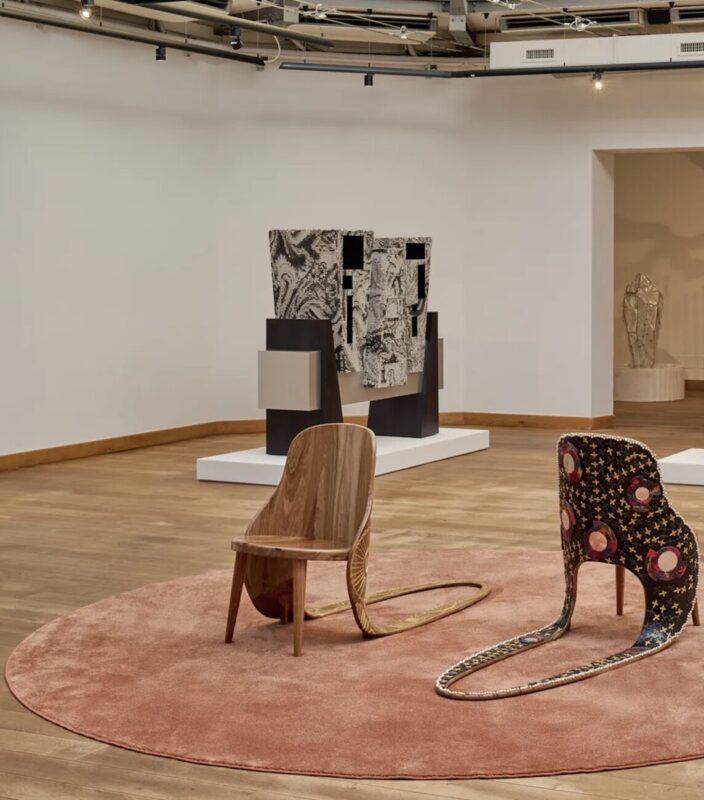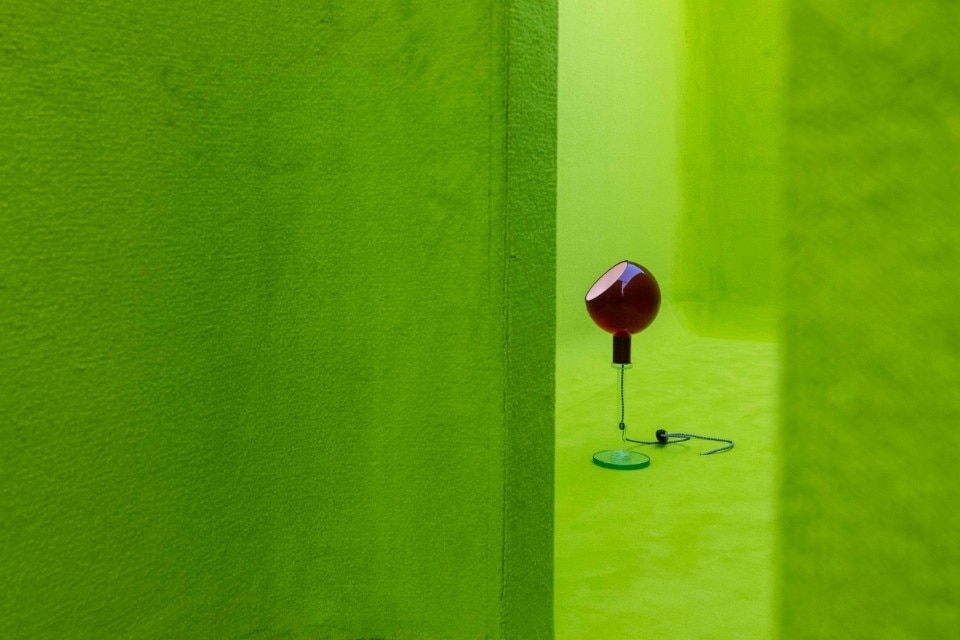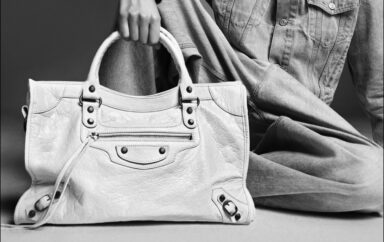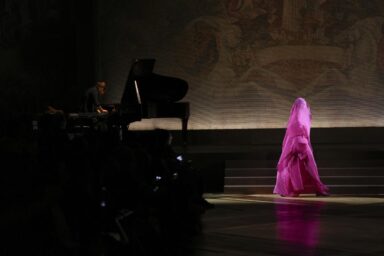From the colonization of fashion to the vanishing of its symbolic dimension, the Design Week emerges as a monumental performance through which to interpret our relationship with reality. It mirrors a recent trend in its primary medium, fashion, where there’s an increasing reference to iconic codes to underscore the importance of respecting brands that withstand the test of time. Here, in our comprehensive summary, Collectible DRY presents the curated selection of the finest fashion moments from Milan Design Week 2024
Words DOMENICO COSTANTINI
Loewe
Loewe creative director Jonathan Anderson primarily worked with alumni from the brand’s prestigious Craft Prize on his first-ever lighting installation at Salone del Mobile. Staged at Palazzo Citterio in the heart of the Brera Design District, the presentation featured one-of-a-kind lighting designs from 24 artists who the brand has either worked with or supported in the past. Remarkably, it was the first time that any of the featured makers had worked with light, which accounted for the originality on display.

Gucci
Entering through a carpeted staircase surrounded by lacquered walls in the dark red ‘Ancora Rosso’ hue that is a signature of the De Sarno era at Gucci, visitors were presented with an antidote in acid green when they reached the top. Inside this starkly saturated mini maze, architected by Guillermo Santomà, were five objects De Sarno had chosen from several Italian masters over the years that had been re-issued in the Ancora-red hue for the occasion. The Le Mura sofa by Mario Bellini for Tacchini from 1972; the Clessidra rug from an iconic design of Piero Portaluppi made by CC-Tapis; the Storet tallboy by Nanda Vigo for Acerbis in 1994; the Opachi vase by Tobia Scarpa for Venini in 1960; and the Parola lamp by Gae Aulenti and Piero Castiglioni for FontanaArte in 1980 each stood in their own space to be admired from all angles.
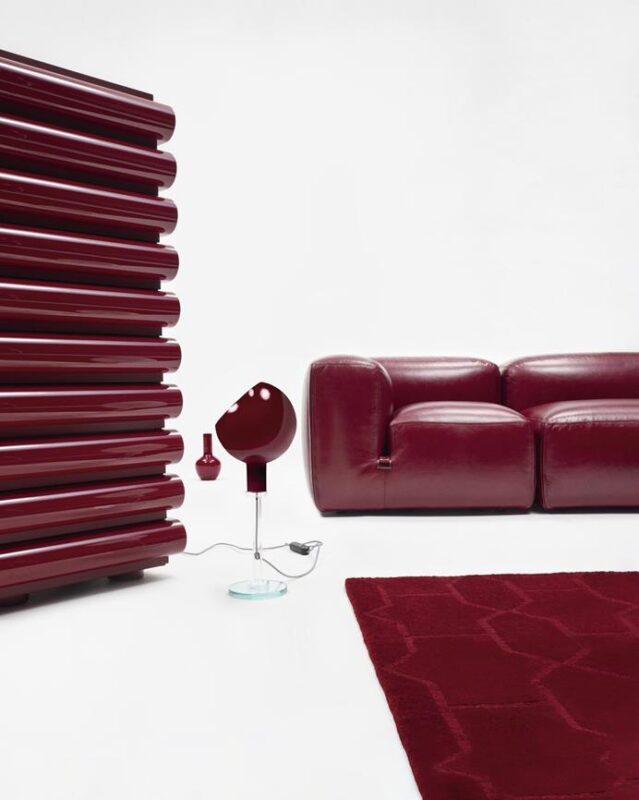
Hermès
Hermès presented ‘Topography of Material’, an installation conceived to create a dialogue between roots and movement, between materials and know-how. Suspended below foot-level on a diagonal catwalk of sorts, we were welcomed by 16 intersecting floors that brought together 16 different types of stone, ten types of earth, four types of wood and many variations of terracotta brick all sourced from either Italy or France arranged in intricate ways to celebrate the skill of timeless handcraft. It formed a powerful introduction to the presentation of objects itself as this year Hermès made a point to highlight its own enduring codes. Behind a 35m-long and 6.m-high suspended black wall lay objects from the house’s archive juxtaposed with recent masterpieces and objects making their debut.
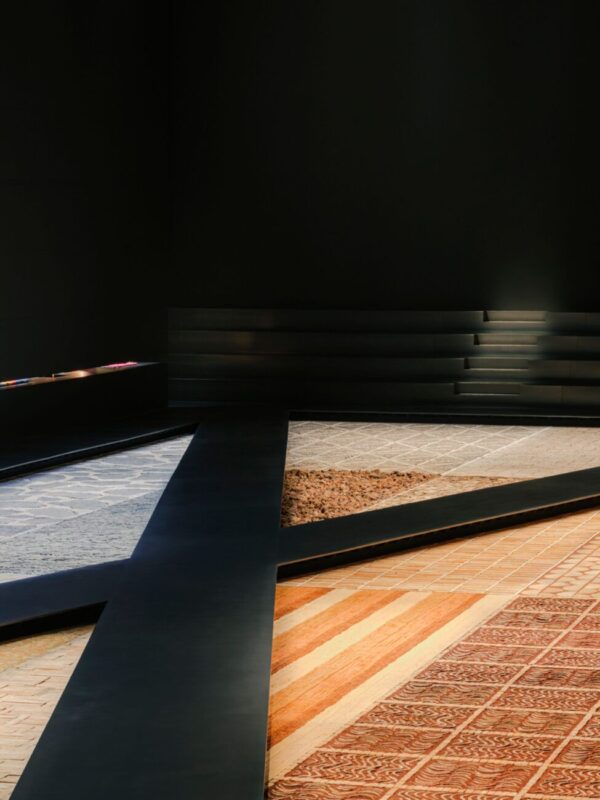
Bottega Veneta
Bottega Veneta presented ‘On The Rocks’ at the Palazzo San Fedele, a special location for the house as it was the setting for creative director Matthieu Blazy’s first show and is its soon-to-be HQ. Partnering with Cassina and Fondation Le Corbusier, the brand honed in on the iconic LC14 Tabouret Cabanon stool that it described as ’a timeless icon of Le Corbusier that embodies the excellence of the Cassina carpentry workshop’. First conceived by the designer for his Côte d’Azur cabin, it was inspired by a washed-up whisky box he found on the shores beneath the residence, hence the title of the installation, which saw several iterations piled high, one on top of the other, reminiscent of a jagged coastline. This isn’t the first time Blazy has affiliated himself with the object; at his recent A/W 2024 womenswear fashion show set, guests sat on bare wooden versions. For Salone, they came in the same rendering but also covered in the brand’s famous intrecciatio leather to create 160 limited editions.
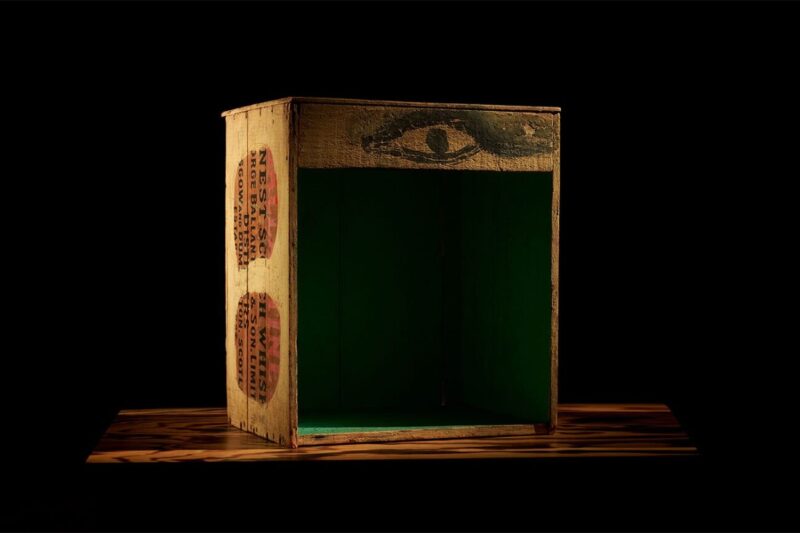
Saint Laurent
The Paris-based house turned the clock back to 1953 and the private collection of Anala and Armando Planchart who commissioned the legendary architect Gio Ponti to mastermind their hilltop Venezuelan villa overlooking Caracas. On finishing the project, Ponti commissioned artisans from his native Italy to help furnish the space and turned to Ginori 1735 to create a collection of porcelain plates featuring motifs from around the villa and the couple’s initials. It is these plates that creative director Anthony Vaccarello curated and had reissued by the ceramic experts for Saint Laurent’s special installation in the cloisters of the Chiostri di San Simpliciano. Displayed in oscillating tubes on a raised platform that mirrored the height in which they originally lived in Villa Planchart Segnaposto, the presentation marked a coming together of multiple design icons.
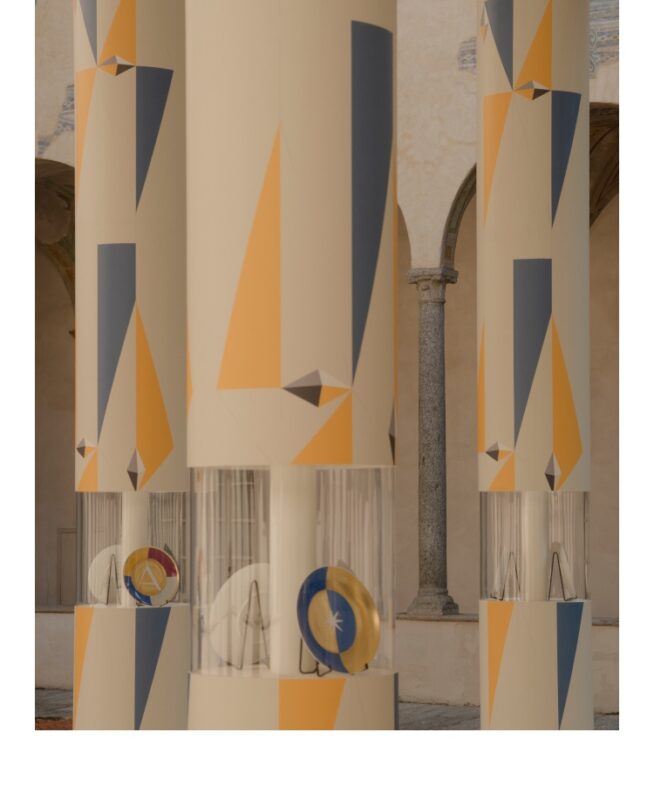
Prada
Once again collaborating with FormaFantasma (above), Prada staged its Prada Frames seminar discussions on the theme of Being Home. Throughout the week, luminaries in different fields came together – including Paola Antonelli, Brigitte Baptiste, Kate Crawford, Jack Halberstam and David Van Severen – to cover myriad topics that were contextualised by Alice Rawsthorn. Each of the 17 sessions took their leave from different rooms around the home: for the bedroom, Gulsum Baydar and Philippe Rahm discussed the bedrooms role as a comfort zone; for the living room, Jayden Ali and Jack Halberstam were in conversation with Andrés Jaque exploring the rituals of diaspora communities in architectural spaces; and in the library, Isabella Rossellini and Mary Kuhn examined the relationship between humans and nature in the home, past and present. Staged each year to invite people out of their everyday lives and explore new and alternative analysis of familiar situations, it continues to be a highlight.
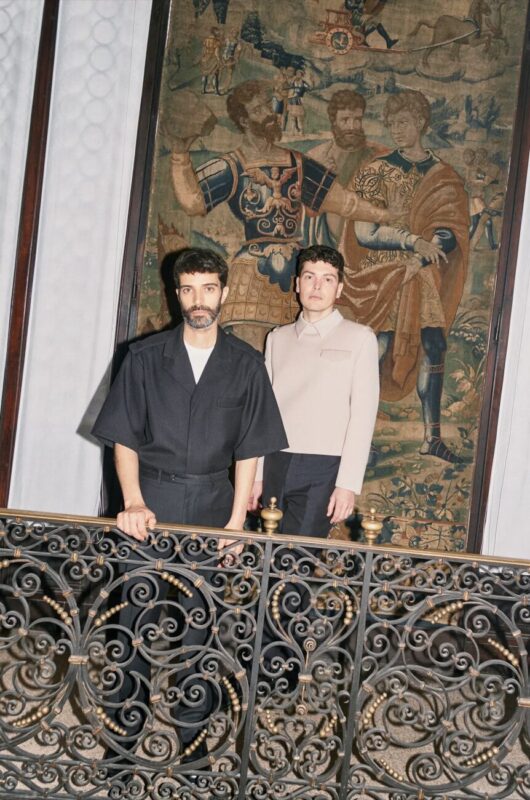
Aspesi
ASPESI and vetsak, a German brand of next-generation design, present a capsule that represents a true fusion of fashion and furniture: vetsak dressed by ASPESI. Embracing shared values of innovation and tradition, they have brought to life a project that unexpectedly combines their iconic products, transforming unused nylon garments into sofas. The final result is pieces that signal longevity in a world of consumption and contribute to the conversation between fashion and interior design. This is the reason behind the project’s name, Transformation.

JW Anderson
Of the rest, some quote works of literature, some refer to already extant works of art, and some feature Carroll’s own phrases. Carroll’s shows come together across the making of them, language accreting daily to form a modular chorus. It is only in the realisation of a show that its aesthetic gument emerges. Days, presented by JW Anderson at the flagship store in Milan during Salone del Mobile, thematises the labour of art and study: how one makes meaning from materials, and how one learns to do so from those who’ve done it. Each work on its own invokes a host of images, voices, places, and times; in assembly, the works give onto a conceptual space at once transhistorical and precisely contemporary.
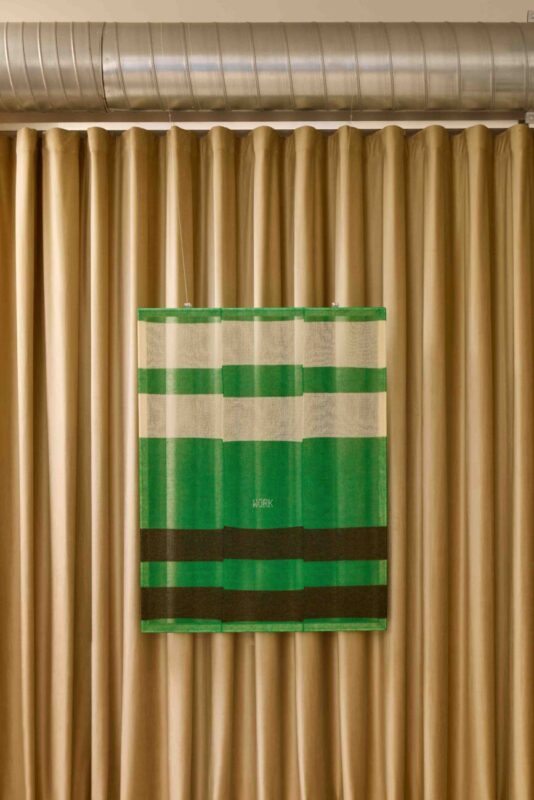
Balenciaga
Balenciaga continues its ongoing Art in Stores project by way of a collaboration with American artist Andrew J. Greene.
The artist’s sculptures are placed as familiar objects, manufactured objects atop stainless-steel stanchions. A concealed motor rotates each item slowly, mimicking traditional retail displays. Placed in a procession behind a glass storefront, the artworks dramatize their place within the viewer’s world. Alongside a handheld mirror, a shrimp cocktail, a red rose, and a mapped globe are some of Balenciaga’s signature trompe-l’oeil products: the reusable Coffee Cup, the shoe-like Knife Clutch, and two styles of the glossed leather Chips Bag.
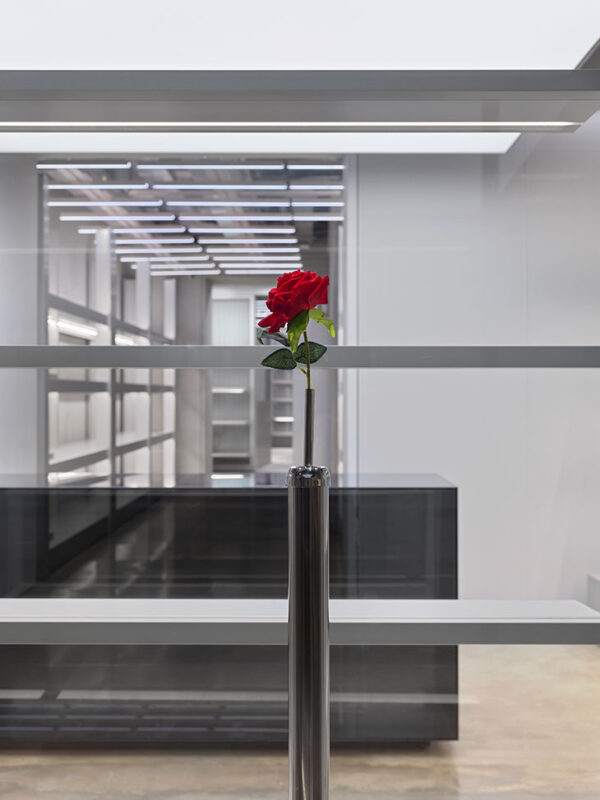
Dolce & Gabbana
Dolce & Gabbana successfully concludes its Gen D project, conceived and initiated by Domenico Dolce and Stefano Gabbana to support young artists and creatives in the field of design and furnishing, much like they have long done in the realm of fashion. Selected by curator Federica Sala from around the world, the 11 creatives were invited to explore some of Italy’s main artisanal techniques, resulting in a series of works exhibited during Design Week.
